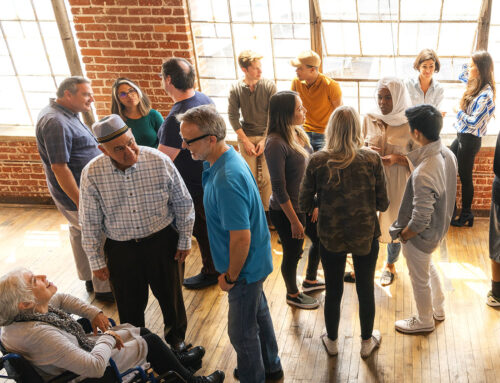In every community, a network of support services exists to help individuals achieve success and overcome challenges, from youth mentorship to adult job training. But often, these services operate in silos, leaving crucial gaps in support that could empower residents more effectively. Building bridges between these resources is essential, especially in areas facing unique economic, social, and educational challenges.
Why Community Support Matters
Quality community support is more than just a safety net; it’s a foundation for lifelong resilience. For young people, access to after-school programs, mental health resources, and career readiness workshops can make all the difference in shaping a positive future. For adults, whether they are seeking new career opportunities, parenting resources, or mental health support, these services provide the tools to build a stable and prosperous life.
Yet, challenges arise when services are inaccessible, disconnected, or not widely known within the community. Here’s how we can bridge these gaps to create a more cohesive, supportive community for all:
- Enhancing Communication Between Services
One of the biggest hurdles to seamless support is a lack of awareness. Youth programs, adult learning services, healthcare providers, and local nonprofits all play vital roles in our communities, yet they often don’t interact enough. Improving communication among these entities can lead to a more coordinated approach where each provider understands what others offer, enabling referrals that meet the unique needs of each individual.
Encouraging regular meetings or creating a shared communication platform can help break down these silos, allowing organizations to share insights, refer clients, and stay informed on available resources. As a result, a resident who starts with one service can be more easily connected to others that can assist them further.
- Improving Access to Resources
Access barriers often prevent individuals from reaching the services they need, whether due to location, transportation, or simply the awareness that these resources exist. Community centers, schools, and libraries are excellent hubs for information sharing. Expanding access points in easily accessible public locations can help residents better connect to these services.
Moreover, offering virtual resources like online workshops or virtual counseling can break down geographical barriers, ensuring that even residents in remote areas can access essential support.
- Increasing Awareness Through Storytelling
For many people, hearing the story of someone from their community who benefited from a support service is far more impactful than a flyer or formal announcement. By sharing success stories, highlighting impactful programs, and promoting the real-world benefits of these services, we can increase engagement and trust within the community.
Blog posts, social media campaigns, and community newsletters can share the real voices of those who’ve benefited from services, helping others see what’s possible and inspiring them to reach out.
- Fostering Cross-Generational Support Programs
Many challenges don’t exist in isolation; youth, families, and adults often have interconnected needs. By creating cross-generational support programs that include youth, adults, and seniors, communities can cultivate a sense of shared responsibility and mutual benefit. Mentorship programs where adults or seniors volunteer to support youth, or workshops where young adults learn from the life experiences of older residents, can strengthen the community fabric.
These interactions foster empathy and understanding while providing practical support—whether it’s career advice for teens or digital literacy skills for seniors. Such programs bridge gaps and build valuable community bonds that benefit everyone involved.
- Collaborating with Local Businesses and Schools
Local businesses and schools are deeply connected to the community’s youth and workforce. Collaborating with these institutions allows support services to align with the community’s real-time needs. For example, partnerships with schools could create specialized tutoring programs, while collaboration with businesses could lead to job shadowing or internship opportunities for both youth and adults.
Schools and businesses can also serve as ambassadors for support services, helping spread the word, encourage engagement, and highlight how these resources positively impact community well-being.
Building a Future of Accessible, Connected Support
Ultimately, to improve the quality and reach of youth and adult services, we need a shared commitment to bridging gaps and enhancing collaboration. By strengthening partnerships, expanding access, and creating a culture of storytelling, we can build a community that empowers every resident, from young to old, to pursue their goals and contribute to the vibrancy of the community.
Let’s work together to make support services visible, accessible, and impactful for everyone in our community. Every small step in this direction moves us closer to a future where no one has to face challenges alone.





